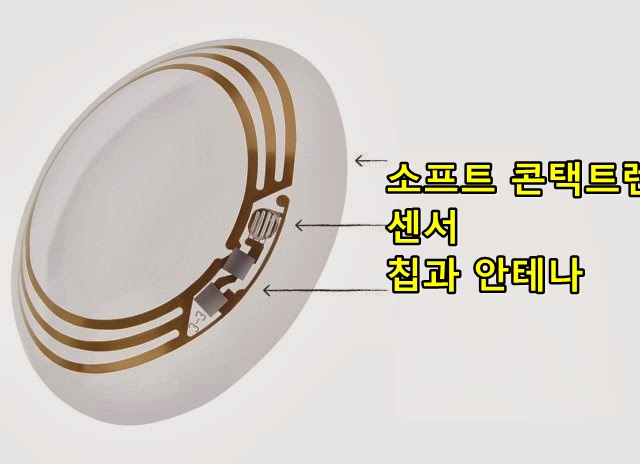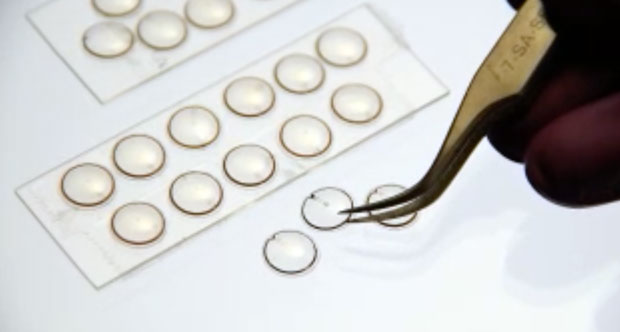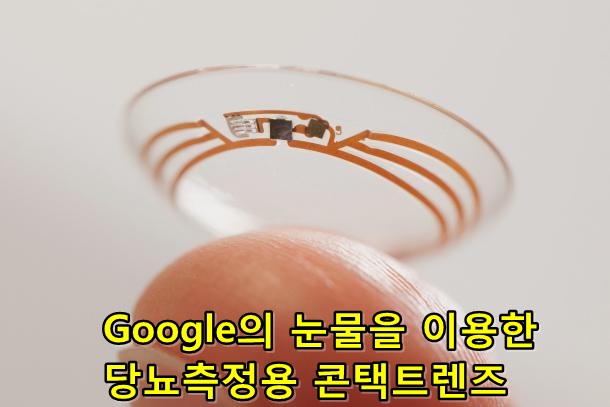Google에서 당뇨측정용 콘택트렌즈 개발중
당뇨 환자분들의 가장 큰 불편은 무엇일까요?
저혈당의 위험 ?
당뇨합병증?
시력 저하?
족부궤양?
발기부전?
여러가지가 있겠지만 뭐니뭐니해도 매일 2-3번씩 바늘로 손을 찔러야하는 혈당 측정의 고통이 아닐까요?
하지만, Google에서 wearable 기기인 구글 글래스에 이어 “스마트 콘택트렌즈“를 개발중입니다.
19일 블룸버그 통신에 따르면 이번 프로젝트 공동설립자인 브라이언 오티스와 바박 파비즈는 미세 무선 통신칩과 포도당 센서가 내장되어 있어 눈물성분으로 포도당을 통증없이 측정할 수 있고, 저혈당이 측정되면 작은 LED 전구로 알려주는 스마트 콘택트 렌즈를 개발중이라고 합니다.


콘택트렌즈 막 2장 사이에 초소형 무선칩과 당측정용센서, 머리카락보다 가는 안테나와 발광 다이오드 (LED)를 넣어서 만든다고합니다.
구글의 미래기술 개발사업인 “구글X 프로젝트”의 일환으로 18개월 동안 개발되었고 상용화 하려면 시간이 좀 더 걸린다고 합니다.
미국 식품의약국(FDA)와도 만났다고 하니 빨리 출시되어 나왔으면 좋겠네요.
내과 전문의로서 보는 관점은 당뇨병의 경우 혈액 (동맥, 정맥, 모세혈관) 뿐 아니라 소변(뇨), 침, 눈물 등 당뇨병이 있는 경우 우리몸의 모든 조직에서 포도당이 높게 측정됩니다.
눈물에도 당이 측정이 된다는 것과 1초에 2번씩 측정이 가능하다면 나중에 눈물의 당 정상치, 눈물로 재는 당뇨병의 진단기준 등도 새롭게 정립되어야 할 것 같고, 안구 건조증이나 눈물이 많이 나는 분들의 경우 어떻게 측정하는지가 좀 더 고려되어야 할 것 같습니다. 하지만, 현재 몇 일에 한 번정도 채혈로 한 달 또는 두 달 치 혈당을 측정하여 이를 토대로 약복을 하는 것 보다 좀 더 개인별로 맞춤치료가 가능할 것으로 보이고, 개개인의 혈당 증감 패턴을 정확하게 판단하여 당뇨병의 완치에 도움이 될 것으로 보입니다.
앞으로도 이러한 스마트 기기들이 많이 출시되었으면 좋겠습니다.
아래는 두 개 기사의 전문입니다.
Google has been working on smart contact lenses embedded with sensors “so small they look like bits of glitter” and an antenna “thinner than a human hair.”
But these lenses aren’t being developed to give people super-human sight or cast the Internet over their field of view — rather, they could potentially help diabetics monitor their glucose levels.
Google announced Thursday that it’s been working on this secret project at its Google[x] research lab. Not only has it developed prototypes of these smart contact lenses, but it’s also done multiple clinical research studies, met with the US Food and Drug Administration, and is looking for potential partners to bring the product to market.
“We’re now testing a smart contact lens that’s built to measure glucose levels in tears using a tiny wireless chip and miniaturized glucose sensor that are embedded between two layers of soft contact lens material,” the project co-founders Brian Otis and Babak Parviz wrote in a blog post. “We’re testing prototypes that can generate a reading once per second.”
Diabetes is said to be one of the fastest growing diseases in the world. According to Google, it affects one in 19 people around the globe. In order to keep blood sugar levels in check, diabetics must give themselves finger prick blood tests throughout the day.
These tests can be time consuming and painful. But they’re crucial — if glucose levels get out of control, diabetics risk damage to their eyes, kidneys, and heart.
For years scientists have been investigating other ways to test blood sugar levels. One branch of research has been exploring breathalyzers as a way to detect heightened glucose levels. Researchers have also looked into using tears for glucose tracking, which is where the idea of a contact lens came along.
Related stories
Google’s smart contact lenses: Could have been Microsoft
Woman cleared of driving while Glassing
Are security guards now manning Google shuttle stops?
Google Doodle honors famed zoologist Dian Fossey
Google Now notifications now alive in Chrome test version
Using tears is complicated, however, because it’s been hard for scientists to collect tears for testing. So, it’s still unclear how effective this body fluid works in measuring glucose levels. Additionally, this product is far off from any sort of mainstream use. Not only does Google need to find partners to get the contact lenses to market, but it also needs to go through the arduous FDA clearance process.
Besides blood sugar testing, Google also hopes that the smart contact lenses can warn users if their glucose levels are high or low.
“We’re exploring integrating tiny LED lights that could light up to indicate that glucose levels have crossed above or below certain thresholds,” Otis and Parviz wrote. “We hope this could someday lead to a new way for people with diabetes to manage their disease.”
The smart contact lens can measure the glucose content of the wearer’s tears, and can do so twice every second. This method is more convenient that using a regular blood sugar level instrument, which requires users to draw their own blood daily. Currently, the contact lens features a glucose sensor and antenna that are wedged between two layers of contact lens. The circuit that has been used in the lens is no bigger than a piece of glitter. These are enclosed in a thin plastic-like film that is biocompatible.
The smart contact lens broadcasts information via radio frequencies to an external monitoring device, which powers the mechanics of the lens through radio frequencies. Google is also looking to add a small LED notification light that lets users know when their glucose level has crossed a certain value.
This lens was designed at Google’s X labs, Google’s research division that is known for undertaking ambitious initiatives, like the self-driving car. Babak Parvis, the man behind the idea, has been working on a smart lens at the University of Washington before he joined Google’s X labs. At one stage, he collaborated with Microsoft Research in creating a similar lens that could be wearable. But the project looks like it did not get anywhere after that.
Worldwide diabetes count is set to cross 500 million by 2035, according to the International Diabetes Federation. Therefore, a lens that can effectively monitor glucose content would be a boon for individuals with diabetes.
Google is currently working with the Food and Drug Administration in conducting clinical trials of the smart contact lens, and is also looking for partners that would be interested in bringing this product to the market.







